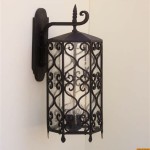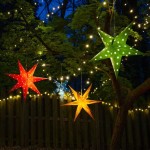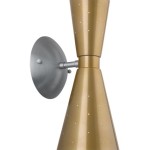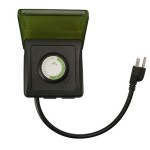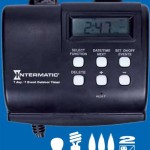What Is The Best Material For Outdoor Sheds?
Choosing the right material for your outdoor shed is an important decision that will impact its durability, longevity, and overall aesthetics. With a wide array of options available, each possessing its own set of advantages and disadvantages, it’s essential to carefully consider your specific needs and preferences before making a choice. This article will delve into the most common shed materials, highlighting their key features and helping you determine the best fit for your outdoor storage needs.
Wood: The Classic Choice
Wood has long been the go-to material for sheds, prized for its natural beauty, versatility, and affordability. Its warm, rustic appeal blends seamlessly with most outdoor settings, adding a touch of charm to any backyard. Furthermore, wood is relatively easy to work with, allowing for customized designs and modifications. It’s also readily available, making it a convenient choice for many homeowners.
However, wood sheds require more maintenance than other materials. They are susceptible to rot, insect infestation, and weathering, necessitating regular painting or staining to protect them from the elements. Wood can also be prone to warping and cracking, particularly in harsh climates with extreme temperature fluctuations. In addition, wood sheds are more flammable than some other materials, requiring careful consideration of safety and fire prevention measures.
Metal: Durability and Low Maintenance
Metal sheds, often constructed from steel or aluminum, offer exceptional durability and low maintenance needs. They are resistant to rot, insects, and fire, making them a reliable option in challenging weather conditions. Metal sheds are also known for their longevity, standing up to wear and tear for many years. Their sleek, modern design can enhance the aesthetics of contemporary landscapes.
However, metal sheds can be more expensive upfront than wood sheds. Their metal panels can also become very hot in direct sunlight, making the interior uncomfortable. It’s important to choose a shed with adequate ventilation to mitigate this issue. Additionally, metal can be susceptible to dents and scratches, which can affect its appearance over time. Proper care and maintenance are still necessary to preserve the longevity of a metal shed.
Vinyl: Weather Resistance and Aesthetics
Vinyl sheds have gained popularity in recent years due to their exceptional weather resistance and low maintenance requirements. Their smooth, non-porous surface is impervious to water, rot, and insects, making them ideal for humid or rainy environments. Vinyl is also available in a variety of colors and textures, allowing you to choose a shed that complements your outdoor aesthetic.
Although generally more expensive than wood sheds, vinyl sheds are less expensive than metal sheds. However, vinyl is not as strong as metal and can be more susceptible to damage from impacts. The material can also become brittle in extreme cold, potentially leading to cracks or breaks. Furthermore, vinyl’s synthetic nature may not appeal to those who prefer the natural appeal of wood.
Plastic: Affordability and Versatility
Plastic sheds offer a cost-effective solution, particularly for smaller storage needs. They are lightweight and easy to assemble, making them a popular choice for DIY enthusiasts. Plastic sheds are also highly resistant to moisture, insects, and rot. They offer good ventilation and can be easily cleaned with a simple hose.
Despite their advantages, plastic sheds are often considered less aesthetically appealing than wood or vinyl sheds. They can also be prone to damage from sunlight exposure, which can cause them to become brittle or fade. Plastic sheds are not as durable as metal or vinyl sheds and may have a shorter lifespan. Additionally, their lightweight construction may make them susceptible to strong winds, requiring proper anchoring.
Concrete: Uncompromising Durability
Concrete sheds offer unparalleled durability and fire resistance. They are virtually impervious to weather, rot, insects, and fire. Concrete sheds are also extremely low maintenance, requiring only periodic cleaning to maintain their appearance. Their solid construction adds a feeling of security, making them ideal for storing valuable items.
However, concrete sheds are significantly more expensive than other materials and require specialized construction expertise. They can also be very heavy, making them difficult to move or relocate. The material’s low reflectivity can trap heat, making the interior uncomfortable in warm climates. Additionally, concrete sheds are typically less aesthetically pleasing than other options, making them less desirable for visually sensitive settings.
Ultimately, the best material for your outdoor shed depends on your individual needs, budget, and aesthetic preferences. Carefully consider the advantages and disadvantages of each material before making a decision. This informed approach will help you choose the perfect shed to meet your storage needs and enhance your outdoor living space.

Which Is Better Wooden Sheds Vinyl Resin Or Metal Portable Missouri

Vinyl Vs Wood Shed Find The Best Material For You Now

Tips And Solutions Detail

Recycled Plastic Sheds Maintenance Free Garden

The Top 5 Shed Siding Or Exterior Wall Materials Recommendation

The Top 5 Shed Siding Or Exterior Wall Materials Recommendation

Best Outdoor Sheds For Diffe Weather Conditions Forestry Reviews

The Top 5 Shed Siding Or Exterior Wall Materials Recommendation

Vinyl Vs Wood Shed Find The Best Material For You Now
:max_bytes(150000):strip_icc()/free-shed-plans-1357751-1-5067cdb726aa4a50b48eff36f74c1b6d.jpg?strip=all)
15 Free Shed Plans That Will Help You Build A
Related Posts
